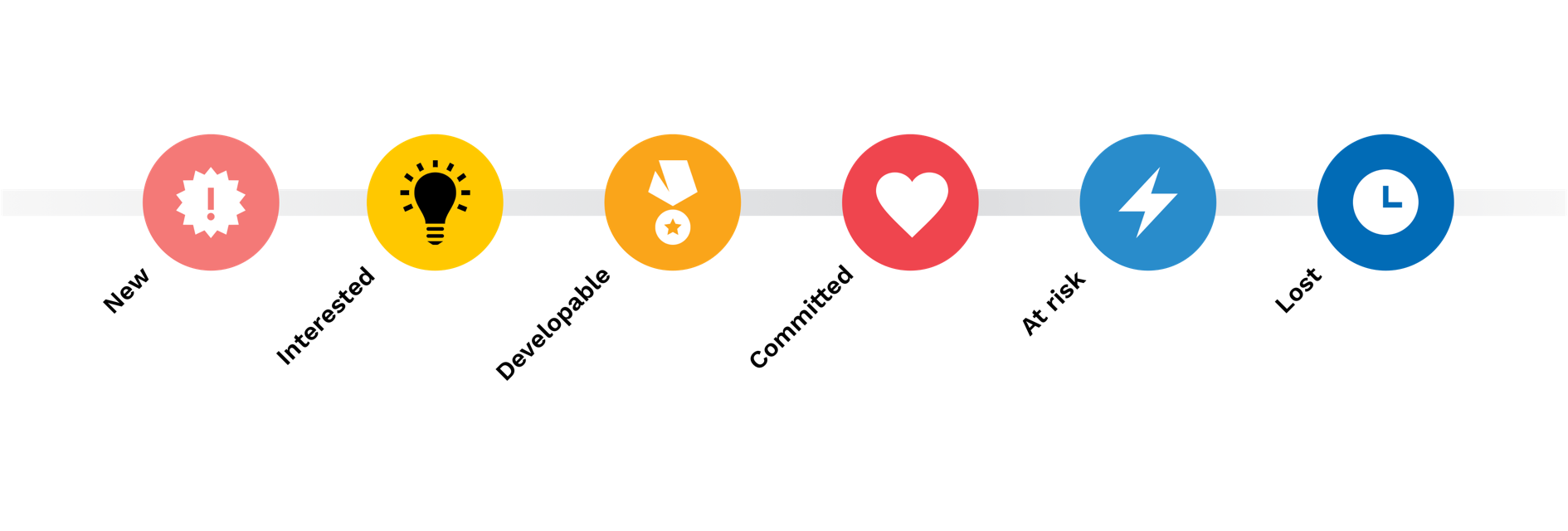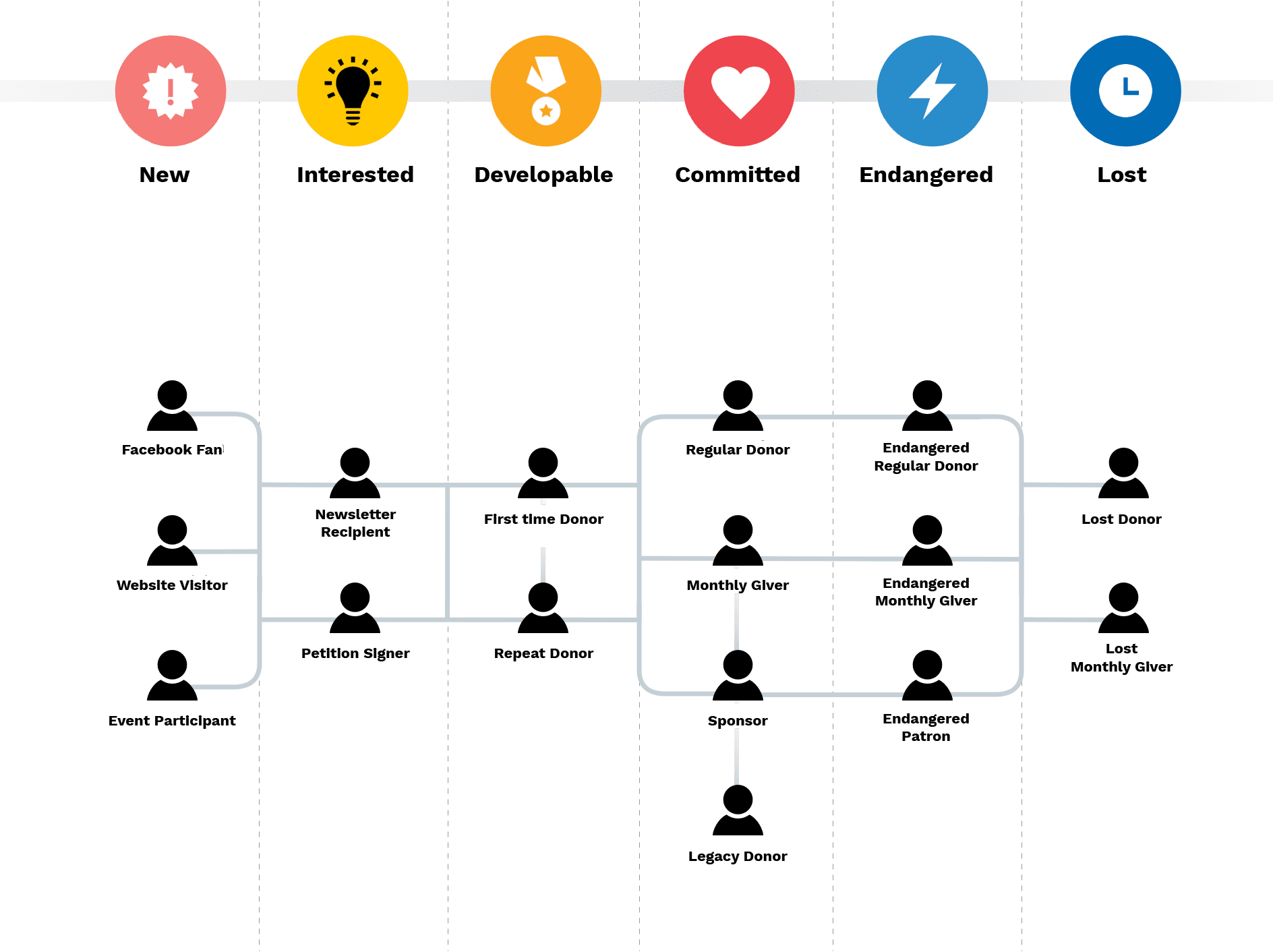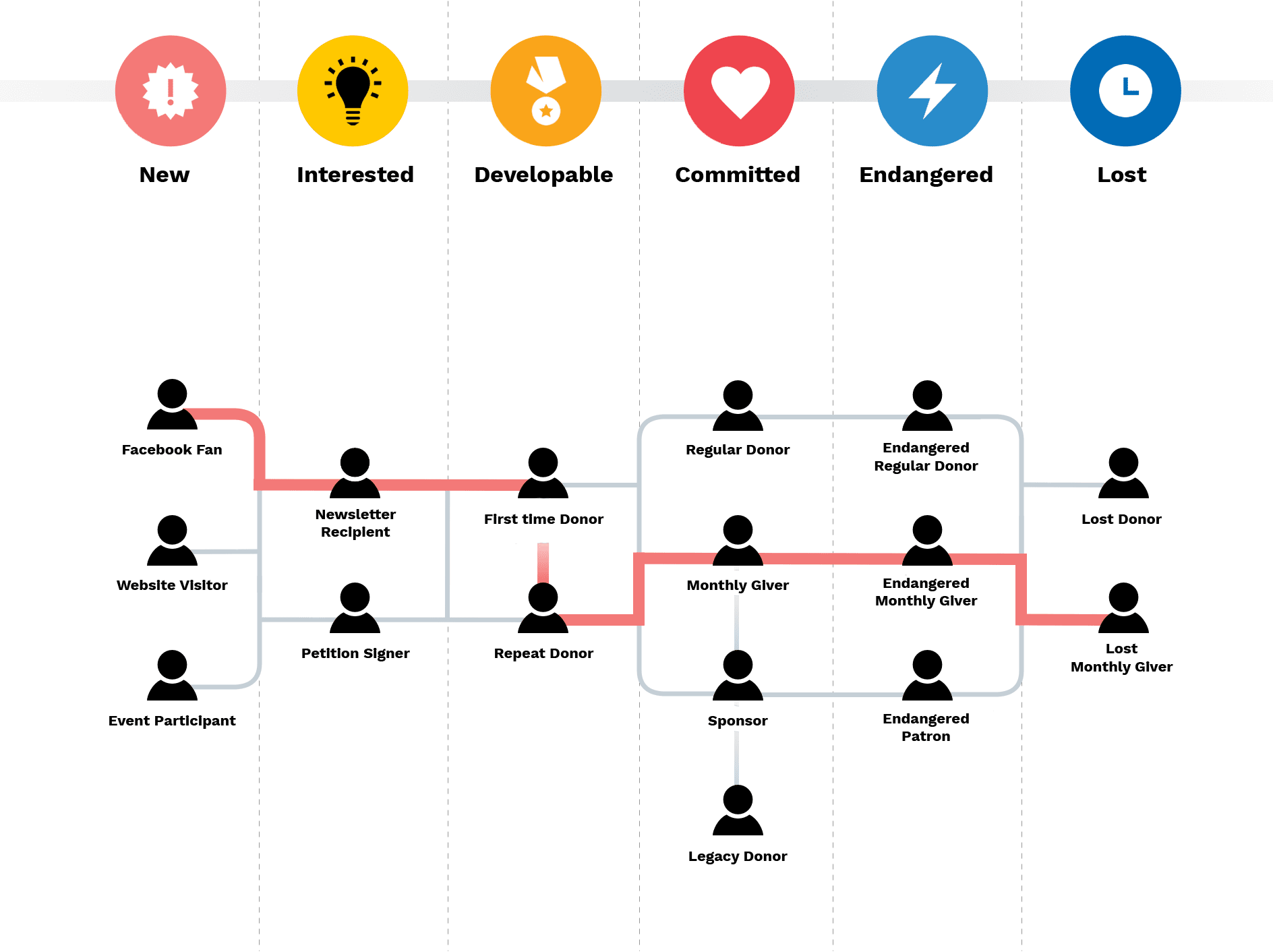Lifecycle strategy: Bringing order to chaos
Who? What? Where?
People are connected to a nonprofit organization in many different ways and on many different levels. Some are Instagram followers, regularly enriched with interesting facts and figures while scrolling through their feed. Others diligently read an organization’s newsletter to actively inform themselves about new projects. Then there are those who are part of a monthly giving program and find a detailed report in their mailboxes every quarter, visualizing the impact of their donations.
The options are endless and vary depending on the nonprofit in question. But every organization can gain clarity by grouping these individuals into key target audiences and dividing them into one of six lifecycle phases. If, for example, a person browses the website for the first time, clicks from page to page and registers for the newsletter, they have formed a picture of the organization and actively expressed their curiosity. As such, they are in the second phase and are considered “interested”. Categorizing in this way creates order in the chaos and helps fundraisers focus on getting the right message to the desired target group through the appropriate channel.
What is a Lifecycle Strategy?
Anyone who is interested in an organization or supports it with a donation is – whether they are aware of it or not – in the donor lifecycle. This lifecycle is divided into 6 stages or phases. Details can be found here.

These broad phases can be further subdivided according to the specific organization. For example, a donor may support the organization with a standard recurring donation, or through a special monthly giving program. In both cases the donor would be in the “committed” phase. In general, there are several target groups per lifecycle stage, which can be different for each organization.
But where exactly do you start?
Start by precisely defining which individual target groups there are and in which lifecycle phase they fall. This is a necessary first step. Once clear divisions have been created, the aim is to determine how a person can be developed from one stage in the lifecycle to the next. An example would be to convert one-time donors – who belong to the stage “developable” – to permanent donors through an automated journey. Here, too, every nonprofit organization can define for itself what these journeys can and should look like.
After each target group has been identified and all relevant measures specified, the result is an overview of all donor journeys a person can possibly go through – this is known as the lifecycle map.
How detailed this map will be, is up to each organization. For example, you can include every single journey, no matter how small, or focus on the most important and frequent donor journeys. The level of detail often depends on the available resources and internal capacities. What makes the map so practical, is that it can be adapted and expanded with time. It can grow and flourish in step with the organization or respond to the development of new tools and technologies.
At first glance, this so-called lifecycle map may look chaotic, but if you see it as a subway plan that summarizes all routes, it serves as an actionable starting point for optimizing each and every aspect of your fundraising efforts, whether lead generation, donor recruitment or retention.

How does a Donor Journey relate to the Lifecycle Map?
Each person follows his or her own individual donor journey when connecting with an organization. Or – to use the subway map analogy – every individual drives down a unique route through the 6 lifecycle phases. Leads and donors are everywhere, but they must be picked up and brought to their destination.

Advantages of a Lifecycle Strategy
The question now is: Why does my organization need a lifecycle strategy?
It’s simple!
To keep an eye on everything
The lifecycle map provides a holistic (over)view of all types of people who are connected to your organization.. Be it people who have subscribed to your newsletter, permanent donors or those who have not made a donation in the last 12 months.
In addition, you can see which conversion and retention measures are currently in use and make decisions on this basis. You can, for example, decide to link up different measures, to develop new ones or even to do without some.
A lifecycle strategy essentially gives you the ability to coordinate any and all online and offline measures in order to increase their collective potential.
The focus is on the people
Classical fundraising tends to be very channel-centric. The focus is not on the donors, but on the measure at hand. In a non-digitized world this approach made sense and is still used by many organizations today.
However, in a digitalised age, potential donors are constantly moving between channels, receiving different messages wherever they go. They seamlessly switch between the online and offline world all day long. Moreover, not all potential donors have the same interests.
This is why modern fundraising communication moves away from thinking in marketing measures and instead takes on the donor’s perspective. With a lifecycle strategy, the focus is on donor-centric communication. New technologies are used to personalize and automate content. By asking what lifecycle phase a donor is in, this strategy takes the donor’s relationship to the organization into account. In this way, each supporter receives the message that is appropriate for them. Messages are not just broadcast whenever or wherever. But at a time and in the place that is right for the donor.
Leads and donors are actively and automatically monitored
Being able to locate where a person is within your donor lifecycle at all times, empowers you as an organization to purposefully develop potential donors and intensify your bond with existing supporters – guiding them through the various stops on the lifecycle map.
After all target groups have been defined and allocated to their respective lifecycle stage, this information needs to be reflected in the CRM system or automatically assigned to each person. Doing so enables not only a targeted, but also an automated cultivation and conversion of contacts. Once they have been set up and tested, personalized Journeys (which only represent one type of action) do the work for you, alleviating valuable resources in the long run.
Curious to know more? Wondering what a lifecycle strategy looks like in practice? Then this case study from the Salvation Army Switzerland is something for you.
Keen to get started on your own lifecycle strategy? We are happy to support you through the process. Just reach out to us!
